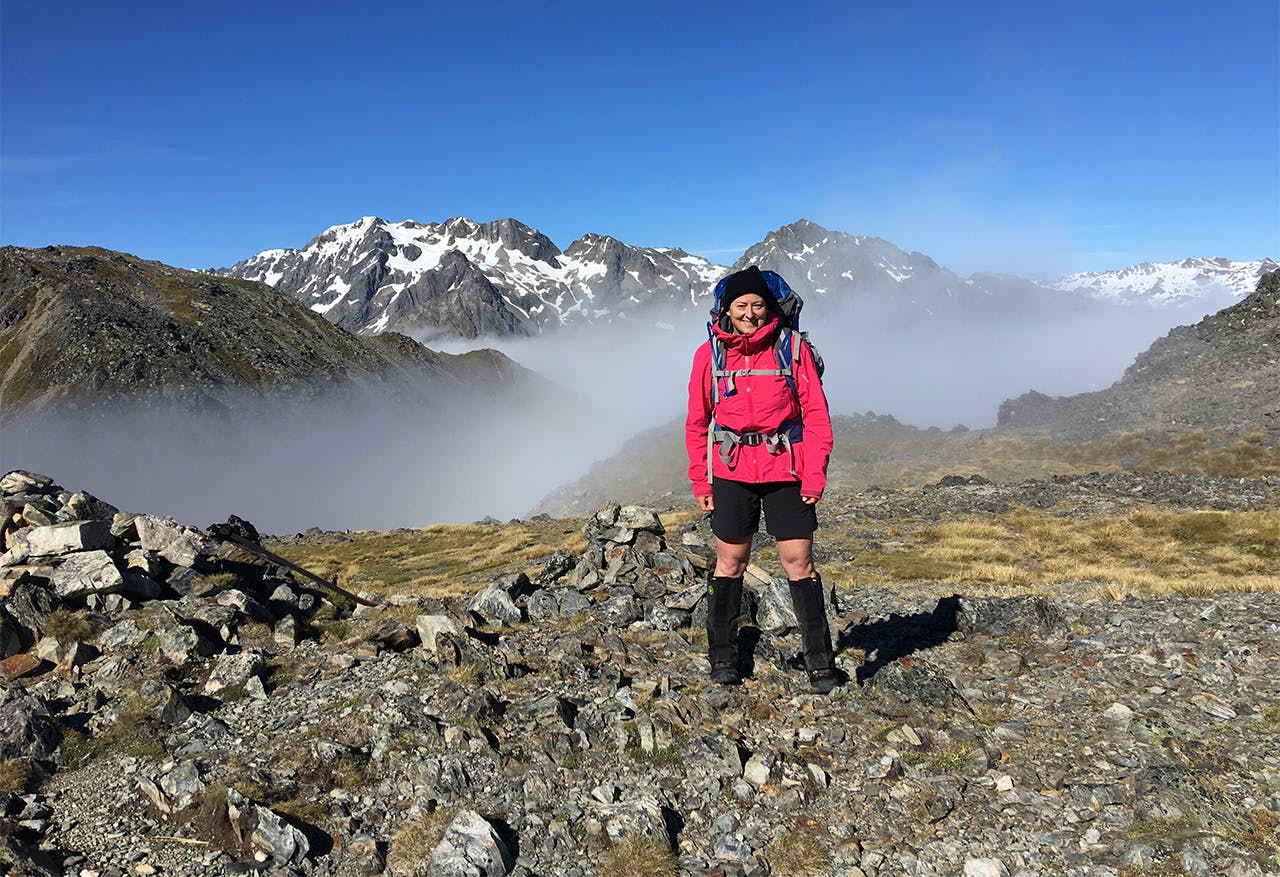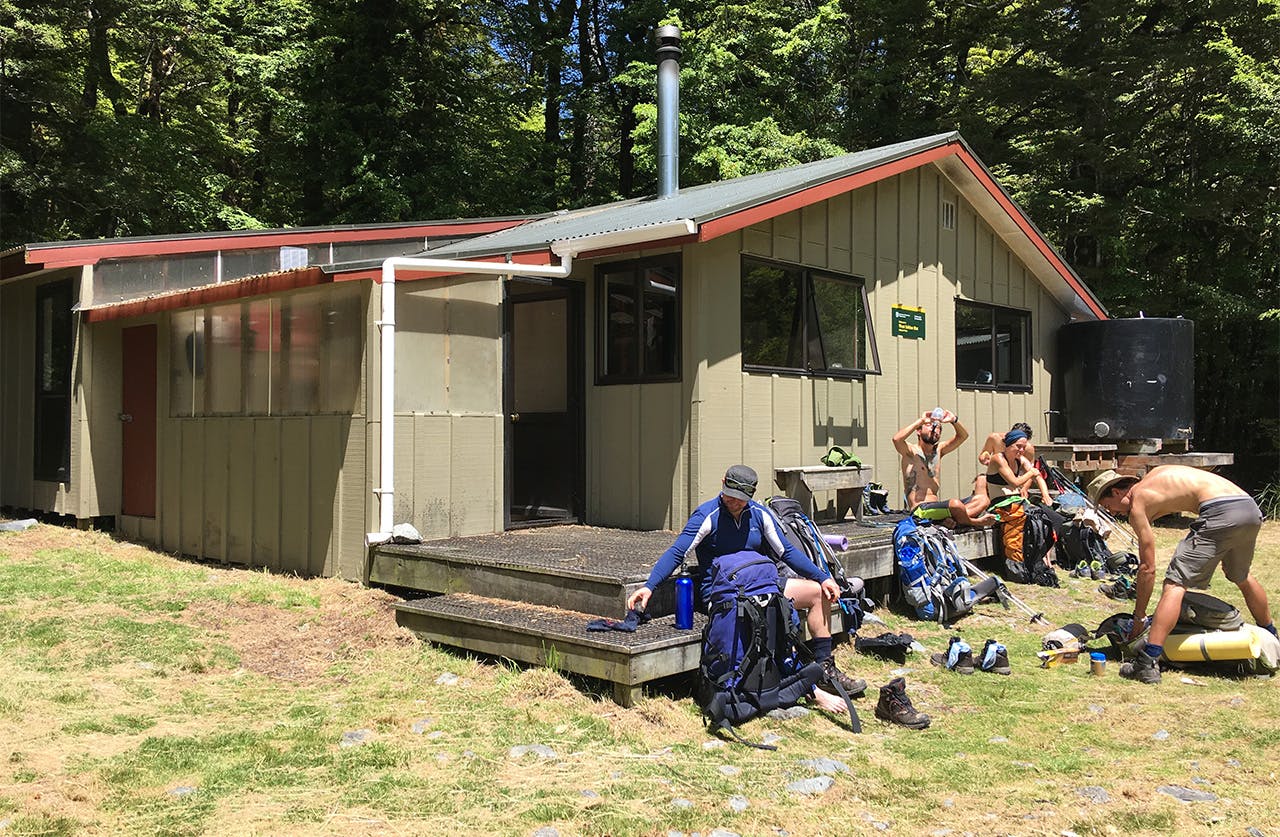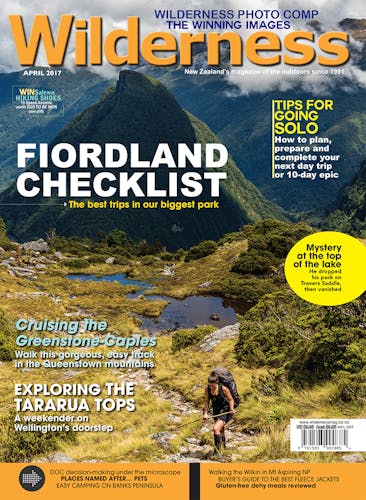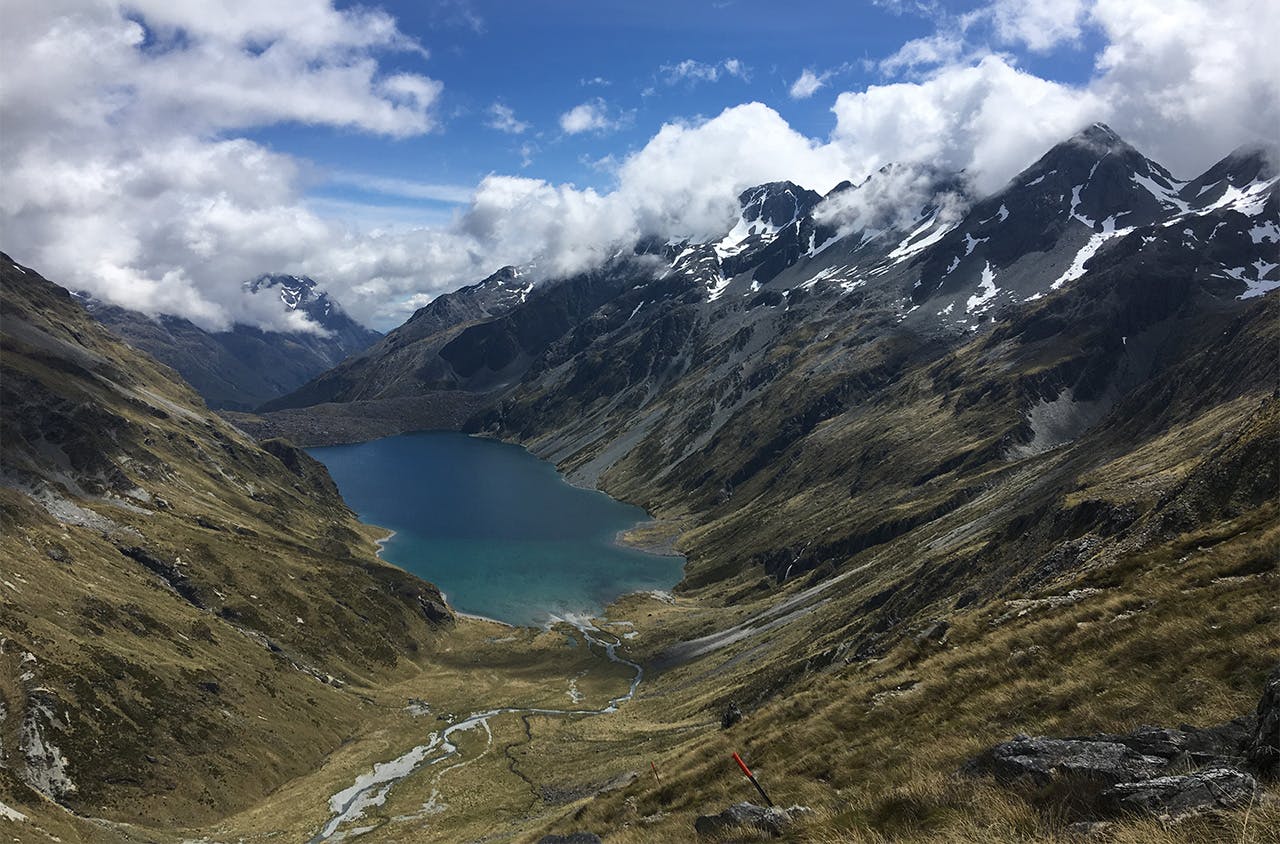If your tramping companions aren’t up to the kind of trips you want to do, then you might have to start going solo. Hazel Phillips knows that predicament all too well and shares hard-won advice for aspiring solo trampers
All this outdoors stuff is a slippery slope, isn’t it? An addiction of sorts. One day you’re doing a two-hour day walk in the Waitakeres, finding it all rather challenging, and then suddenly you’re on a 10-day tramping bender, solo, with a bivvy bag, a stack of topo maps and a solar charger to make sure your Kindle keeps cranking for the duration.
When I first started tramping, I remember thinking that doing an overnighter was for tough people. Then I decided to give it a go, and that was all well and good, but I drew the line there: “I’ll only do the Great Walks, not that backcountry frippery.”
Soon I was ticking off ‘real’ backcountry huts (you know, the old NZFS ones painted in DOC rescue orange) and weighing up different tent options.
So perhaps it was inevitable that eventually I would find myself out on the track for a 10-day tramp. Solo, because it’s hard to find people who want to tramp for 10 days, not to mention over both Christmas and New Year’s Eve.
I tacked together a plan: up the Travers, over Travers Saddle, to Blue Lake, Waiau Pass, then out via the St James Conservation Area rather than the more conventional (Te Araroa) route of the St James Walkway. I would hit up Lake Guyon, possibly Stanley Vale, Pool Hut, and exit via Scotties Camp Hut, then road bash from the old St James homestead out to Hanmer Springs.
Much of the solo tramping I’d done before barely counts as solo, such as the Abel Tasman Coast Track, because you meet so many people on the way and tend to group up. But I started in earnest after a friend told me he thought I was incapable of doing the Ruapehu Round The Mountain Track by myself: “You can’t carry all your own gear,” he said. “You couldn’t do it.” (I did do it, in three days, rather than the five days I’d allowed for.)
The solo bug bit me when I realised I was often the one to organise our trips from start to finish. I would plan the route, research it, do the intentions, bring and carry the gas, cooker and PLB. I realised if I’d been by myself on the track it wouldn’t have made much difference.
So, after 10 days tramping to think about it, I’ve come up with five aspects of solo tramping to consider.
1. Safety
This is the biggest and worth the most thought. Whenever people find out I like solo tramping, they’ll ask about safety first. “Now, do you mean safety as in having an accident, or safety as in sex pests in the wilderness?” I respond.
It’s almost always the latter. Non-trampers have this idea that the bush is just crawling with molesters searching for would-be victims. For the record, I haven’t yet met any sex pests in the wilderness, and (touch wood) I haven’t had any accidents aside from the occasional tramping faceplant, which can happen whether you’re alone or with somebody.
A big part of safety (especially fatigue and hypothermia) comes from how you manage yourself. I find when I’m in a group I’m less likely to speak up if I think something’s a bad idea or to disrupt the flow of the group to attend to physical needs. But when I’m solo, I’ll stop as soon as I realise I’m hungry/thirsty/cold/hot/tired/blistered and sort it out.
In some accidents it won’t matter if you are alone or not, such as big falls with death on impact. Andy Wyatt, the British Te Araroa Trail walker who died on the bluffs at Lake Constance, was so prepared that he had his passport strapped to his chest, and instead of tramping a track had actually plotted waypoints. Searchers reckon he fell 180m.
Going solo is proven to be more dangerous, though. Mountain Safety Council research shows 72 per cent of search and rescue operations are for a solo tramper or a single lost person who was on a multi-person trip – and presumably became separated from the group.

Going solo brings increased risk but also increased reward – here the author reaches Travers Saddle, a long-time objective. Photo: Hazel Phillips
2. Pace and decisions
I’m a slow tramper, but I always say that slow and steady wins the race. If I’m with others and trying to keep up with their pace, I’ll be buggered within a few hours and stuffed for the day, but if I keep wombling at my own speed, I’ll likely beat the track times easily.
Rolling solo also means you make your own decisions. You figure out the route, where to stop for the day, where to have your lunch break.
On my recent tramp, I had a long slow day from Lake Guyon Hut past Stanley Vale Hut and down the Stanley River. I was looking out for a suitable campsite early on in the day but didn’t see anything I liked, so I kept trucking, thinking I would make it out to the Waiau River and across to Pool Hut for the night.
Towards the Stanley/Waiau junction, the topo map shows a track heading up over the terraces then descending south to cross the outlet of the Stanley where it joins the Waiau, then crossing the McArthur Bridge to Pool Hut rather than fording the rather formidable Waiau. In reality, there is no such track – it simply doesn’t exist. It was around 4pm and I had been going since 7am, so I decided to get out the bivvy bag and set up camp beside the Stanley River. I hadn’t seen anyone else all day so I thought it would be safe enough to have a skinny dip in the river. And it’s a good thing nobody was around – I must’ve looked a sight, stark naked except for my boots (they were already wet and the rocks were sharp, so I left them on).
The next day, I scrambled up the terraces and made my way across and down to the Waiau above Pool Hut; the supposed track to the McArthur Bridge was still elusive, so I crossed the Waiau and bashed through matagouri up to the hut for morning tea.
3. Gender
This plays into the first point a little bit – I imagine men tramping solo don’t get asked about sex pests in the bush very often.
I find people are often gobsmacked to see a woman tramping solo. I don’t see it as all that unusual, but on this trip I met a few people who were genuinely astounded. “You’re amazing!” they kept saying. On other tramps, I’ve had people at the hut having kittens at the idea I was by myself, only to largely ignore men arriving solo later on.
On this tramp, I met Eleanor and Helena, two women tramping solo, as well as a few guys on their own. Eleanor and Helena, although quite experienced, were making conservative decisions and taking all factors into account. They were also super fit and fast. But the guys I met often didn’t have PLBs, were carrying far too much food (and alcohol) for their fitness and capabilities, and hadn’t trained at all before the trip.
I met one bloke on the south side of Waiau Pass who had come from West Sabine Hut that morning (then past Blue Lake Hut, Lake Constance and over Waiau Pass) and was intending to go over not only Thompson Pass that day but also over D’Urville Pass and down to East Matakitaki Hut. He looked strong and speedy, but he didn’t have a tent or a bivvy bag as backup, and he had no choice but to make it to Lewis Pass for a pickup by a certain date.
Generalisations of course, but I find women tend to err on the side of being conservative and more prepared.

Solo trampers often team up with other solitary walkers, like these trampers at West Sabine Hut. Photo: Hazel Phillips
4. Loneliness
I aspire to being a hermit one day so this doesn’t usually affect me. I’ve found that the fear of being alone, or the fear of loneliness, is worse than the actual reality of aloneness.
But on this trip, for the first time, I did actually feel lonely. However, it wasn’t when I was totally by myself. It struck me when I was at Lake Guyon Hut with two Americans who had voted for Trump as a ‘protest vote’ against Hillary: “We didn’t think he’d actually win.”
It’s possible to feel lonely when you’re alone, just as it’s entirely possible to feel lonely when you’re in company you don’t enjoy. I also missed the others I had teamed up with on the Travers side before heading down the Waiau River, and I missed my friend Mike, who I’ve done long-distance tramps with before.
While I’m walking, I appreciate the peace and quiet of being solo; I hammer out thoughts that have been taking up space inside my head; I have ideas and I laugh at my own jokes. And I keep this quote from Cheryl Strayed’s book Wild in mind: “I knew that if I allowed fear to overtake me, my journey was doomed. Fear, to a great extent, is born of a story we tell ourselves, and so I chose to tell myself a different story from the one women are told. I decided I was safe. I was strong. I was brave. Nothing could vanquish me.”
5. Gear
It’s worth saying, gear can work out heavier when you’re alone. With others you can share the weight – one tube of toothpaste between 10 very patient people, for example – but solo you’re the only one carrying the can.
On this trip, I had pared it down to more or less the bare essentials, but I was still carrying, for example, the PLB, as opposed to one device between two people, or one or two for a large group. I also brought a solar charger so I could recharge my iPhone, which I was using as a GPS through an app, and it also charged my Fitbit, which I was using as a watch. Tramping must’ve been a lighter affair before all these digital gadgets!
There’s also no backup if you break or lose something. On previous trips I’ve had gas canisters decide not to work, and I’ve heard stories about people getting two days into a 10-day trip to the Olivine and discover their ice axe had fallen off their pack and the cooker wouldn’t go. Thankfully, I didn’t have any issues, aside from my shorts falling down from not eating enough food (this was handily rectified by elasticating them thanks to a couple of emergency hair ties I keep in reserve).
All in all, the trip was probably the most epic thing I’ve done. I remember getting to Hanmer Springs and sitting in the hot pools feeling a bit deflated; I’d done this huge thing I had been thinking about and planning for for so long – what now?
You’d think it would be enough, wouldn’t you, a 10-day solo? But now I’m looking for the next big thing, finger tramping on the topos and Googling huts and streams.
I’d encourage others to get out there by themselves, and see what their own personal boundaries are. Going solo brings with it increased risk, but also increased reward.








